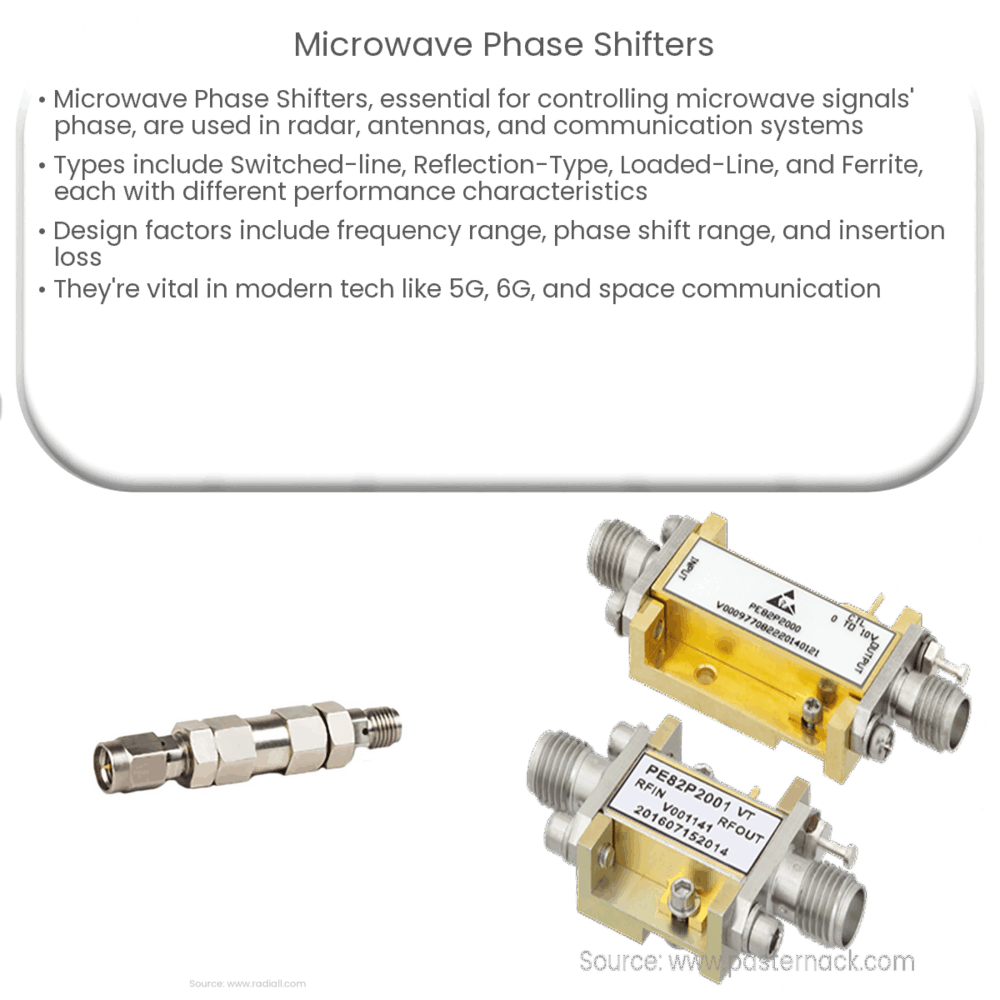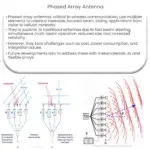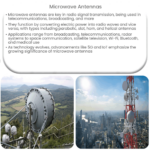Explore the role of Microwave Phase Shifters in modern technology, their design considerations, types, and applications in 5G, radar systems, and more.

Introduction to Microwave Phase Shifters
Microwave Phase Shifters, an indispensable component in microwave technologies, are used in a variety of applications that require control over the phase of microwave signals. They play a pivotal role in radar systems, phase array antennas, and communications systems.
Principle of Operation
At its core, a Microwave Phase Shifter manipulates the phase of an input signal, thereby shifting it by a specific amount. This is achieved by altering the electrical length of the signal path, which directly affects the phase of the signal.
Types of Microwave Phase Shifters
- Switched-line Phase Shifters: This type is straightforward in operation, toggling between two transmission lines with varying electrical lengths. While simple, this design suffers from limited phase shift capabilities.
- Reflection-Type Phase Shifters: This variety of phase shifter uses a reflection-based mechanism, where the phase shift is accomplished by switching between different reflection coefficients.
- Loaded-Line Phase Shifters: This type utilizes variable reactive loading along the transmission line to achieve the desired phase shift. This design is known for better phase shift performance.
- Ferrite Phase Shifters: Ferrite phase shifters leverage the non-linear magnetic properties of ferrite materials. They offer very precise phase control, though they can be heavy and consume considerable power.
Design Considerations
Designing a microwave phase shifter requires a fine balance between numerous competing factors. Some key considerations are as follows:
- Frequency Range: The frequency range of the signal to be processed is critical. Phase shifters designed for different frequency ranges exhibit varying performance characteristics.
- Phase Shift Range: Depending on the application, the required phase shift range may differ significantly. This directly influences the choice of phase shifter design.
- Insertion Loss: Insertion loss is a measure of signal power loss when the phase shifter is inserted into the system. A low insertion loss is always desired.
In the second part of this article, we’ll dive deeper into the various use cases of Microwave Phase Shifters and their impact on today’s technology.
Applications of Microwave Phase Shifters
Microwave Phase Shifters find use in a variety of applications, spanning numerous industries:
- Radar Systems: Radar systems heavily rely on phase shifters to steer the beam of radar without physically moving the antenna. This capability is crucial in radar applications involving aircraft, ships, and weather systems.
- Communication Systems: Phase shifters are integral in communication systems, particularly in phased array antenna systems. They enable beam steering and signal diversity, essential for improving the communication range and reliability.
- Test and Measurement Equipment: Microwave Phase Shifters are also used in various testing and measurement equipment, offering a controlled environment for signal interference and system evaluation.
Future Trends
With the advent of new technologies and increasing demands in communications and radar systems, the future of Microwave Phase Shifters looks promising. Specifically, in 5G and future 6G technologies, the need for advanced beamforming technologies and MIMO (Multiple Input, Multiple Output) systems demands advanced phase shifters for their operation.
Similarly, space technology is pushing the boundary for lightweight, low power, and efficient phase shifters. The need for high-speed, reliable inter-satellite communication poses a challenge and an opportunity for the next generation of phase shifters.
Conclusion
In conclusion, Microwave Phase Shifters are vital components in the realm of microwave technologies. With applications spanning radar systems, communications, and testing equipment, they form an integral part of modern technology infrastructure. The continuous evolution of technologies like 5G, 6G, and space communication systems only amplifies the importance of these components.
Understanding the operational principles, types, and design considerations of microwave phase shifters is a necessary foundation for anyone involved in the field. As we look towards the future, the role of Microwave Phase Shifters is set to become even more significant in shaping our technological landscape.




